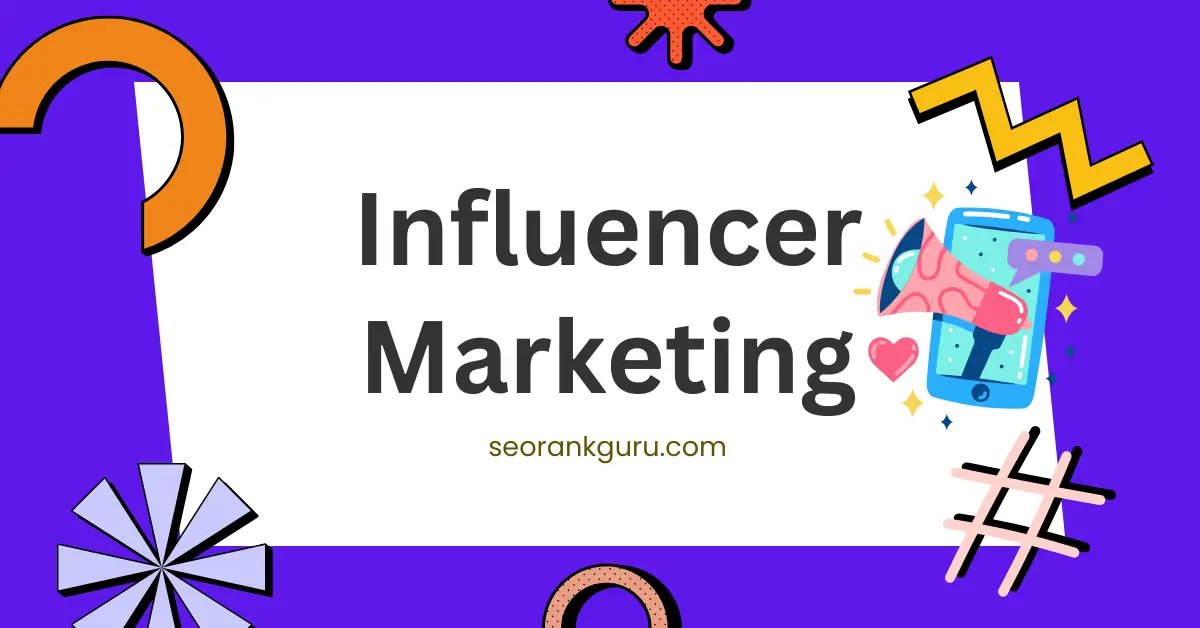Influencer marketing is a form of digital marketing that involves working with individuals who have a large following and influence on social media platforms, to promote a brand or product. These individuals, known as influencers, have built a loyal following by creating content and engaging with their audience. By partnering with influencers, businesses can tap into their audience and reach a larger, more engaged audience.
The importance of influencer marketing has grown in recent years as the world becomes more digitized. Consumers are bombarded with advertising messages from various brands, making it harder for businesses to cut through the noise and reach their target audience. Influencer marketing allows businesses to connect with consumers in a more authentic and meaningful way, leveraging the credibility and trust influencers have built with their audience. This can lead to increased brand awareness and credibility, greater reach and engagement with target audiences, cost-effectiveness compared to traditional advertising, and the ability to generate authentic content and user-generated content.
In this article, we will delve deeper into the concept of influencer marketing, explaining how it works, the different types of influencers, the benefits, best practices, challenges, and limitations. By understanding all these aspects, businesses can make informed decisions when it comes to leveraging influencer marketing to achieve their marketing goals.
How influencer marketing works:
Influencer marketing is the process of working with individuals who have a large following and influence on social media platforms, to promote a brand or product. The process can include several steps that involve identifying, selecting, planning, and executing a campaign.
Identification and selection of influencers:
The first step in influencer marketing is identifying and selecting the right influencers for your campaign. This includes researching different influencers and their audiences, as well as considering factors such as audience size, engagement, and relevance to your target audience.
Campaign planning and execution:
Once the influencers have been selected, the next step is to plan and execute the campaign. This includes setting clear campaign goals, aligning on the content that will be created, and establishing the terms of the partnership.
Measurement and analysis of campaign success:
After the campaign is executed, it’s important to measure and analyze the success of the campaign. This includes tracking metrics such as engagement, reach, and conversions, as well as gathering feedback from the influencers and their audiences. This information can be used to improve future campaigns and make better decisions when it comes to selecting influencers.
To sum up, Influencer marketing is a process that involves identifying and selecting the right influencers, planning and executing a campaign, and measuring and analyzing the success of the campaign. By following these steps, businesses can effectively leverage the power of influencers to achieve their marketing goals.
Types of influencers:
When it comes to influencer marketing, there are several types of influencers that businesses can work with to promote their brand or product. Understanding the different types of influencers can help businesses make informed decisions when it comes to selecting the right influencer for their campaign.
Macro influencers:
Macro influencers are individuals with a large following on social media platforms such as Instagram, TikTok, and YouTube. They usually have over 100k followers and are considered to be popular figures. They have a wide reach and can help businesses increase brand awareness and credibility. Examples of macro influencers include celebrities, athletes, and popular social media personalities.
Micro-influencers:
Micro-influencers are individuals with a smaller, but highly engaged following on social media platforms. They usually have between 5k to 100k followers and are considered to be experts in their niche. They have a more niche audience and can help businesses reach a specific target market. Examples of micro-influencers include lifestyle bloggers, fitness instructors, and beauty gurus.
Nano influencers:
Nano influencers are individuals with an even smaller following but high engagement in niche communities. They usually have less than 5k followers and are considered to be highly connected in their niche. They have a highly engaged audience and can help businesses reach niche audiences. Examples of nano influencers include niche content creators, hobbyists, and community leaders.
When it comes to selecting the right influencer for your campaign, it is important to consider the size of their audience, their level of engagement, and their relevance to your target audience. By understanding the different types of influencers, businesses can make informed decisions when it comes to selecting the right influencer for their campaign.
Benefits of influencer marketing
Increased brand awareness and credibility: By working with influencers, businesses can tap into their audience and reach a larger, more engaged audience. Additionally, consumers trust influencers and are more likely to make a purchase based on their recommendations.
- Greater reach and engagement with target audiences: Influencer marketing allows businesses to target specific demographics and reach consumers who are more likely to be interested in their products or services.
- Cost-effectiveness compared to traditional advertising: Influencer marketing can be more cost-effective than traditional advertising methods, as businesses can work with influencers on a budget that suits them.
- Ability to generate authentic content and user-generated content: Influencer marketing allows businesses to generate authentic content and user-generated content, which can be repurposed for future campaigns.
Best practices for influencer marketing:
Transparency and authenticity in working with influencers: It is important for businesses to be transparent and authentic in their partnerships with influencers. This includes being clear about the campaign goals and expectations from the start.
- Clear communication and alignment on campaign goals: Good communication is key for a successful influencer marketing campaign. It is important for businesses to align with influencers on the campaign goals and ensure that the content created is relevant and authentic.
- Authentic and relevant content: It is important for businesses to ensure that the content created is authentic and relevant to their target audience. This includes ensuring that the influencer’s audience is a good match for the business’s target audience.
- Measuring and analyzing campaign success to improve future campaigns: It is important for businesses to measure and analyze the success of their influencer marketing campaigns in order to improve future campaigns.
Challenges and limitations
When it comes to influencer marketing, there are several challenges and limitations that businesses need to be aware of. These include difficulty in measuring return on investment, difficulty in identifying the right influencer, risk of influencer fraud, and risk of negative brand association if an influencer engages in inappropriate behavior. By understanding these challenges and limitations, businesses can make informed decisions when it comes to leveraging influencer marketing to achieve their marketing goals and avoid potential pitfalls.
Difficulty in measuring ROI:
Measuring the return on investment of an influencer marketing campaign can be challenging. This is due to the fact that it is difficult to track the number of sales or conversions that are directly attributed to the campaign.
Difficulty in identifying the right influencer:
Identifying the right influencer for a campaign can be challenging. Businesses need to ensure that the influencer’s audience is a good match for their target audience.
Risk of influencer fraud:
There is a risk of influencer fraud, where influencers inflate their audience numbers or engage in other fraudulent behavior.
Risk of negative brand association if influencer engages in inappropriate behavior: There is a risk of negative brand association if an influencer engages in inappropriate behavior or makes controversial statements.
In conclusion, influencer marketing has become an integral part of digital marketing strategy for businesses looking to reach and engage their target audiences in a more authentic and meaningful way. The process of influencer marketing includes identifying and selecting the right influencers, planning and executing a campaign, and measuring and analyzing the success of the campaign. By understanding the different types of influencers, and the benefits and best practices of influencer marketing, businesses can leverage the power of influencers to achieve their marketing goals and drive more conversions.
Influencer marketing allows businesses to increase brand awareness and credibility, and reach their target audiences effectively. It can also generate authentic content and user-generated content, which can be repurposed for future campaigns. However, it is important for businesses to be aware of the challenges and limitations of influencer marketing, such as difficulty in measuring ROI, difficulty in identifying the right influencer, risk of influencer fraud, and negative brand association.
Overall, influencer marketing is a powerful tool that can help businesses reach and engage with their target audiences in a more authentic and meaningful way. By following best practices and being mindful of potential challenges, businesses can effectively leverage the power of influencers to achieve their marketing goals and drive more conversions.


